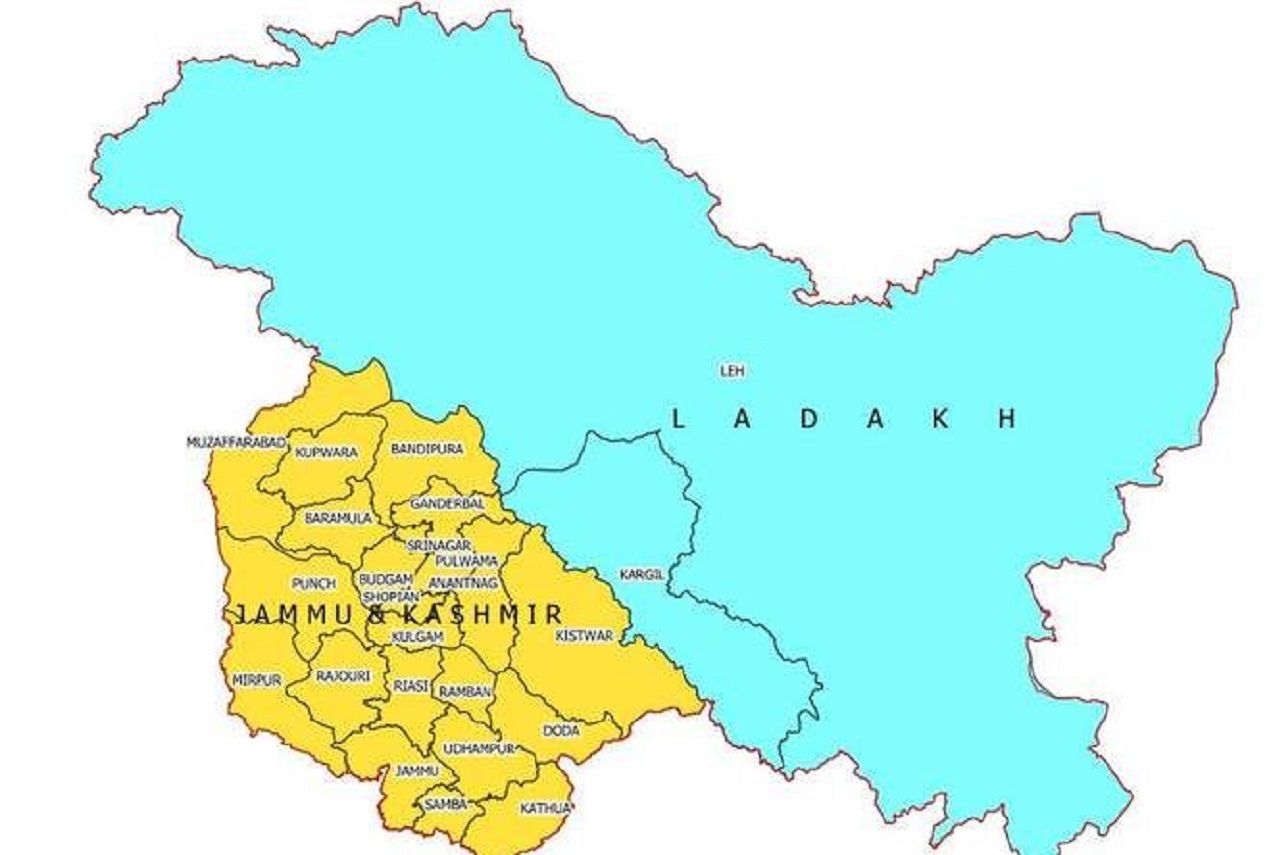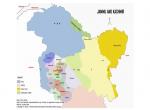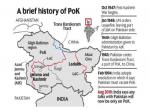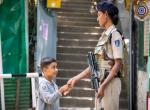Introduction
Disjunction between the law and state can lead to systemic decay that breed corruption, instability, violence and erosion of institutions of governance. Jammu and Kashmir (J&K) is victim of the disjunction that allowed state to plunge into an inexorable proxy war that not only stunted the development but also created a wide wedge between people and the government. Majoritarian view is that disjunction was caused by Article 370 and 35 A, which had given J&K a special status with regard to exercising constitutional, administrative and judicial powers. The political establishment of J&K exploited these special powers and status and it led to lack of accountability and transparency in governance. Lack of delivery of governance was one of the main reasons for disaffection of the people with the state and the central government. Status quo suited politicians, administration, separatists and even proxies of Pakistan because there was a comfort level and an understanding between each of these actors to operate in their own domain. It was the police and central security forces who faced the brunt of proxy war that took more than 42000 lives in the last three decades. The semi-autonomous status of J&K allowed Pakistan to interfere and run proxy war without interruption. There was subversion in almost every institution of the state supported by political leadership that was always seen as soft separatists. Article 370 was used by political leadership as a shield to prevent direct intervention by the federal agencies to bring to book radicals and separatists. Most of these institutions were favourably disposed to proxies or radicals and as a result law could never catch up with the terrorists or even the over ground workers/ radicals/ unarmed terrorists.
It was imperative to revoke Article 35A and amend Article 370 to integrate J&K fully into the Republic of India. Most important aspect to understand is that Article 370 and 35A were temporary in nature and these temporary provisions should not have been allowed to remain in vogue for indefinite period especially when these articles became a tool to give impetus to separatist movement in J&K. In fact, the accession of J&K State with India was absolute and unconditional. It was on the behest of Shaikh Abdullah that temporary provisions were inserted to give J&K a semi-autonomous status. Dr BR Ambedkar was unyielding on the issue of autonomy to J&K. The conversation between Dr Ambedkar and Shaikh Abdullah was recorded in the book, “Dr. B.R. Ambedkar Framing of Indian Constitution” where he told Shaikh that, “To give consent to this proposal (Article 370) would be a treacherous thing against the interests of India and I, as the Law Minister of India, will never do. I cannot betray the interests of my country”.1
The reorganization should not be seen as panacea against radicalization and terrorism. This is an ongoing war and Pakistan will not let this sudden disruption derail their larger objective of bleeding India by 1000 cuts. It is imperative to understand that the centre of gravity will continue to remain masses. Thus, the role of the Union Territory (UT) of J&K should be to enable the community as the front line, as much as about getting between them and the terrorists.1 It is important to understand that if people are not with you, the war against terrorism will be lost. War of perception and intelligence operations can only succeed if people are with the government forces. Therefore, the government will have to be soft, empathetic and benevolent to the public who are victims of terrorism and disruptive actions of proxies of Pakistan.
Reorganisation of Jammu and Kashmir a Step Forward
In a bid to remove constitutional ambiguity and anomaly Government of India passed Reorganisation Bill of J&K 2019, revoked Article 35A and amended Article 370. The question is how does this constitutional exercise benefit citizens and state? Most important aspect is that now all laws passed by parliament will automatically be applicable in J&K and Ladakh. The Constitution of J&K will cease to exist, and so will be the separate state flag. Non-residents can now acquire immovable property in J&K and Ladakh. State will be split into two union territories of J&K and Ladakh for ease of administration. Both UTs will have Lt Governor, however, Ladakh will not have assembly whereas UT of J&K will continue to have assembly with 107 seats. Reservation as applicable in the rest of the country will now be authorized in both the UTs. Police and law and order will remain under the central government however, issues related to local self-governance and land will remain with the UTs. As per the Home Minster of India, 106 central laws will now be applicable in J&K as well as the Ladakh UT with the passage of Jammu and Kashmir Reorganisation Bill, 2019 by the Parliament.3 Some of the key benefits and legislative provisions will be applicable in J&K and Ladakh such as, Prevention of Corruption Act, acts related to the National Commission for Minorities, Right to Education, National Council for Teacher Education, land acquisition, National Commission for Safai Karamcharis, protection of Whistle-blowers, welfare of parents and senior citizens.
What does Government of India wish to achieve through this path breaking constitutional exercise? Most significant is it will allow government to fight terrorism effectively since law & order and police will function under the Union Government. It will bring synergy among the security forces, police and intelligence agencies. Second important aspect is financial transparency and effective utilization of central government aids and grants. Till 2016, as per Comptroller and Auditor General (CAG), J&K’s debt had risen to Rs 55,358 Crores.4 J&K has received 10 per cent of all Central grants given to states over the 2000-2016 period, despite having only one per cent of the country’s population. Irony is that J&K, with a population of 12.55 million according to the 2011 Census, received Rs.91,300 per person central grant over the last sixteen years while Uttar Pradesh only received Rs.4,300 per person over the same period.5 In the absence of prevention of corruption act and accountability, state failed to make optimum utilization of the financial grants and aids. The regime of corruption and misuse of public money will see an end. Third, Gujjar, Bakarwal and SC/ST will get their due both in jobs and representation in legislature. Long standing demand of Valmiki (hygiene and sanitation workers) community to have reservation and citizenship will be met.
Disruption in Pakistan’s Strategy of Kashmir
Pakistan’s Kashmir strategy was disrupted by abrogation of Article 370 and reorganisation of the state. It took both Pakistan and China by surprise and required recalibration of strategy to prevent disruption of Kashmir strategy. The disruption in strategy of Pakistan for J&K was not achieved purely by an act of Parliament but associated steps that government took prior and after the abrogation of Article 370. These steps were: -
- Detention of over ground workers (OGW) led to snapping of the nexus between terrorists, ISI, stone pelters, politicians and disaffected section of the society.
- Drying up of channel of funding through National Investigation Agency (NIA) and revenue intelligence that prevented flow of money through hawala, NGOs and cross border trade (over/ under invoicing of the border trade). This action of the government also made it difficult for Pakistan to mobilise crowd for sponsored disruptive activities.
- Detention of political activists led to choking of political space that was often misused by OGW and terrorists. Unconditional immunity granted to stone pelters and OGW stood withdrawn. As a result, law enforcing agencies could function without bias or prejudice.
To give breathing space and show solidarity with people of Kashmir the only option available to Pakistan was diplomatic offensive through UN Security Council (UNSC), Organisation of Islamic Countries (OIC) and anti-India organisations across Europe. However, India managed to handle the diplomatic offensive by a calibrated strategy of reaching to the group of nations and even individual countries by exposing Pakistan’s evil design to destabilise J&K. It took GOI almost three to four months to convince the global community that abrogation and reorganisation of J&K is internal matter of the country and is not driven by any communal or religious bias. Except Malaysia, Turkey and Pakistan most of the nations across the globe has seen the logic.
Effect on Cross Border Terrorism
There are multiple reasons for terrorism in Kashmir, cross border proxy war, radicalisation, competing religious and political ideologies, drug trafficking and impact of transnational terrorism. Job creation for few and gainful employed for many is not the real answer to eliminate the terrorism. Ideally, state should be able to take the youth away from the streets but it is not possible to engage with every individual or a section of the society. The intensity can be brought down to manageable limit but elimination depends upon multiple factors including consistency in government actions and using law as deterrence against those who cross the legal redlines. A multi-pronged approach is essential to contain terrorism in Kashmir. Defeating or eliminating terrorists is easy but real challenge is elimination of ideology and sources of terrorism. Ending insurgency and terrorism depends upon willingness of the people to stand against it or for it. Government efforts can only go up to a limit beyond which it is the civil society that must assume the role of leadership to extinguish this menace. Civil society has to regain their space to pushback radicals and eliminate the idea of Jihad.
Economic Impact of Reorganisation
Article 370 and 35A had obstructed investment avenues in J&K. With the abrogation of Article 370 the state can expect investment that could generate revenue for the state and jobs for the people. Government of J&K has identified 14 sectors, including horticulture, food processing, manufacturing, infrastructure, media and entertainment, film and tourism. Industrial Promotion Policy 2020 in J&K, which will have elements like SGST reimbursement in full, attractive land policy, exemption from stamp duty, support for green industrialisation along with other benefits. In less than three months after the revocation of Article 370 from Jammu and Kashmir, around 43 private firms with a proposed investment of Rs 13,700 crore have expressed interest to set up businesses in the region.6 Till January the union territory has signed around Rs 2,000 crore worth of non-binding MoUs in Kolkata, Rs 850 crore in Bengaluru and over Rs 2,100 crore in Mumbai. 7 To speed up investment and industrialisation, the Union Territory administration is creating a 6,000-acre land bank for setting up multiplexes, processing units, food parks, film production centres, schools, Information Technology parks and medical complexes in J&K. 8 Notwithstanding the above, to create conducive economic atmosphere it will certainly require security environment to improve and cooperation of public. Government must ensure that there is equal opportunity for all sections of the society and it should not concentrate only around Srinagar or Jammu but business prospects should be dispersed in Chenab Valley, Poonch-Rajouri and North & South of Kashmir Valley.
Challenges to Implement Reorganisation of J&K and Way Forward
The reorganization of the state has altered the narrative of Pakistan and separatists. The reaction is bound to happen since this move will definitely shrink the space for separatists and Pakistan to create instability in Kashmir. Facade created by Pakistan of changing the status of J&K by India is misplaced since there are no external ramifications of this change and LOC and LAC remains as hitherto fore. In fact, status was altered by Pakistan when it illegally occupied POJK, Gilgit-Baltistan and handed over Shaksgam valley to China. Notwithstanding the above, there is need to calm down the tempers in J&K through patience, perseverance, and persistence. The canard being spread by valley-based politicians, separatists and Pakistan that newly created UTs will be colonised and reckless sale of land will take place. Government must bring in some legal framework so that people of J&K and Ladakh are assured that their interests will not be compromised.
The real test of the newly created UTs of J&K and Ladakh is how they handle Coronavirus crisis, sustaining the economic growth and job creation. Coronavirus has threatened tourism industry and all other associated business with it. Therefore, how does the government ensure that the losses are limited by creating alternative source of earning, skill development and sustaining economic growth and development? During the quarantined period, economic engagement of the youth can be in the field of horticulture, floriculture, sericulture, herbiculture and even revival of Kashmiri artisan work. Government can also engage people in afforestation projects. There can be no better perception management than ensuring good health support system, making available medicines essential supplies without escalation of prices or black-marketing.
At the same time the UT governments will have to ensure and put some mechanism to remove nepotism, corruption and timely execution of promised projects and schemes without dilution. The bottom line is that central government and UTs should help in removing regional imbalances and pull J&K out of economic and political instability.
Security is everyone’s concern. It will be prudent to create an effective joint command structure and Jammu & Kashmir Police should be the frontline agency instead of Army or central police forces. Intra-regional engagement is must even if Ladakh is separated from J&K. The civilizational relationship should not be severed for political opportunism. It may be a good idea to create a Ministry for ensuring smooth transition of the two UTs into stable and economically empowered administrative units. This ministry under Prime Minister will be in a position to monitor and give pace to development, grievance redressal and maintenance of law and order. There is a need to identify low hanging projects that can act as confidence building measure to convey a message to the people that the reorganisation is a good for the people of J&K and Ladakh. Visible change in the governance is vital for strategic signalling.
Counterterrorism and Future Security Strategy
The security threat with the reorganisation of the state will be all time high. Threat of terrorist attacks within J&K and even beyond is a high probability. Jammu, and rest of India can become a communal flashpoint if Pakistan is able to trigger some sensational attacks. To expect sudden end to the cross-border terrorism and proxy war will be a huge mistake. With this changed scenario Government of India will have to fight on multiple fronts.
- Diplomatically since Pakistan will not leave any stone unturned to raise Kashmir issue time and again at every international forum. It has already managed to push an informal close door discussion in UNSC with the help of China.
- There is no let-up in the infiltration bid by terrorists supported by Pakistan Army.
- The government is now obliged to deliver governance and create jobs and kick start development as promised.
- It is also now upon the government to showcase this move as a successful model to create pro-India wave among the POJK and Gilgit-Baltistan population.
In an uncertain and ambiguous environment security forces should remember that sharp blows delivered against terrorists/ tactical targets have no value unless they are integrated into a broad and deep approach tackling the origins of the threat.9 Reorganisation of J&K is a constitutional exercise and not a panacea. It needs to be understood that firm handling of terrorism is not a muscular policy; it does not mean indiscriminate use of military. It also means use of law as a weapon and implementation of counter terrorism policies without discrimination. Recent history shows that indiscriminate military responses to terror only escalate the situation.10 The Jammu & Kashmir state was reluctant to try separatists and terrorists arrested over the years under the charges of waging war against India. All governments past and present were guilty of not using law as deterrence against armed and unarmed terrorists. Due to cosy relationship between radicals and political leadership most of the foreign terrorists were tried for possession of weapons and illegally crossing over to the Indian Territory. Whereas, they should have been tried for waging war against India. Will current UT of J&K rectify this anomaly? Deterrence of law is must because when terrorists are eliminated in encounters, they are considered martyrs for the cause. They should be denied an opportunity to achieve “honour in dying” by trying them for waging war against the nation.
Strategy of Patience and Perseverance through Soft Approach
Military dislodgement of terrorists is temporary but perceptional dislodgment from the community at large is what will have long term impact. The reorganisation, amendment to Article 370 and revocation of 35A should act as healing touch and not as part of majoritarian imposition of new rule. There is wisdom in investing in dislodgement of terrorists from the public perception. Soft approach does not mean appeasement but a policy of community first. Therefore, community should be used as frontline soldiers to fight battle of narrative. Community should be used to cool down the tempers of the youth and people at large. Considering the foregoing, security forces are certainly not the one that could eliminate the insurgency/ terrorism without the active participation of the people. Loss of public support is a death blow to the so called just cause of the insurgents/terrorists. The role of the state should be to enable local population to fight terrorism by perception as well as by denial of safe haven. There would be reversal but then security forces should come in between terrorists and public if threat is imminent.
Ultimately the militancy in Punjab was defeated by active participation of the people backed by the security forces. Col. Gian Gentile, an associate professor of history at West Point said, "We could lose our edge in our ability to conduct other kinds of operations”11 if we employ hard power with a view to crush the insurgency and terrorism. If insurgencies/ terrorism could be suppressed by use of hard power, in that case Soviet Union and the US could have achieved spectacular results in Afghanistan, Vietnam, and in Iraq. Someone had rightly said that “Counterinsurgency and counterterrorism is known as a thinking man's war, and it has attracted some of the country's best and brightest.”12
David Galula, the Clausewitz of counterinsurgency advocated that counterinsurgency is 80% political and 20% military. Thus, undue focus and reliance on military for conflict resolution in Kashmir is a miscalculation and unlikely to succeed unless it is backed by endeavours to win over the civil population. The perception of the government that entire population of Kashmir is disaffected may not be true, but if people are not treated with empathy and compassion, there is likelihood that more sections of the population may become disaffected. Counterinsurgency and counterterrorism are more holistic and involve broader reach of power to touch the hearts and minds of the people. Radicalisation cannot be handled by muscular policy, only way out is adoption of soft approach to deal with radical ideologies. De-radicalisation and disengagement of extremists from the toxic environment is best handled by war of ideas.
Development of a conflict-ridden state is building capacity to break the cycle of poverty, violence and political instability. It is imperative to clear the ambiguity and apprehensions of the people with regard to land ownership and job reservation for domicile citizens of J&K. The state must ensure protection of economic, political, social and cultural freedom. No development model will succeed unless state builds resilient institutions and transparent governance. There is a need to create partnership with civil society to build trust between people and the state.
Conclusion
Success of reorganisation is obligatory and Modi Government has four years to execute their plans. Failure will not only distance Kashmir valley further away but even Jammu division (Poonch, Rajouri and Chenab Valley) and Ladakh will witness turbulence. The bottom-line of success and failure of this constitutional exercise lies in delivery of governance and redressal of grievances. Radical decisions require rational response and it is high time for politicians and bureaucracy to leave politics out of it and ensure success of this experiment.
It is true that development requires stable peace and therefore, all sources that give impetus to terrorism must be neutralised. A quarter of a century ago, British Prime Minister Margaret Thatcher described publicity as the oxygen of terrorism.13 Thus government should not give a platform and opportunity to terror groups that give them desired mileage and publicity especially post implementation of reorganisation. No matter how many terrorists are eliminated, the cadres will continue to get replenished due to a false perception of honour to die for the cause of Jihad. The terror groups and their network is resilient and the threats they pose is too complicated to be vanquished by mere leadership and cadre decapitation.14 Terrorists lose when cause is delegitimised by public participation. Therefore, it is important to build bridges with the people so that terror groups can be dislodged from the public perception.
A new approach is required to put into practice a “dogma of muscular & soft counter terrorism” in practice. Endeavour should be to build trust with the public and deterrence against the terrorists. Let the battle of narrative be spearheaded by the people, battle of guns by the security forces and healing touch by the government.
End Notes
- Dr SN Busi, Dr. B.R. Ambedkar Framing of Indian Constitution, Ava Publishers, Vol1, 2016, P 472.
- John Ranie, New Priorities for International Terrorism, International Institute for Strategic Studies, July 21, 2018.
- Anand Patel, 106 central laws to apply in J&K now, India Today, August 7, 2019.
- J&K’s debt increases to Rs 55,358 cr: CAG, The Tribune, July 11, 2017.
- TCA Sharad Raghavan, J&K gets 10% of Central funds with only 1% of population, The Hindu, July 24, 2016.
- Moushumi Das Gupta, 43 companies with Rs 13,700 crore investment plan promise J&K a new beginning, The Print, October, 18, 2019
- PTI, J&K inks over Rs 2100-cr MoUs during investment summit roadshow in Mumbai, Business Standard, February 22, 2020.
- Peerzada Ashiq, J&K woos investors with 6,000-acre land bank, The Hindu, February, 19,2020.
- Ibid.
- Simon Tisdall, The ‘iron fist’ response to terror attacks in Egypt never works, The Guardian, November 26, 2017.
- Tara Mckelvey, The Cult of Counterinsurgency, The American Prospect, October 23, 2008
- Ibid.
- Bruce Hoffman, The Global Terror Threat and Counterterrorism Challenges Facing the Next Administration, CTC Sentinel, November / December 2016, Volume 9, Issue 11
- Ibid.
(The paper is the author’s individual scholastic articulation. The author certifies that the article/paper is original in content, unpublished and it has not been submitted for publication/web upload elsewhere, and that the facts and figures quoted are duly referenced, as needed, and are believed to be correct). (The paper does not necessarily represent the organisational stance... More >>
Image Source:http://jknewstoday.com/wp-content/uploads/2019/11/Map-of-UT-660x445.jpg











Post new comment